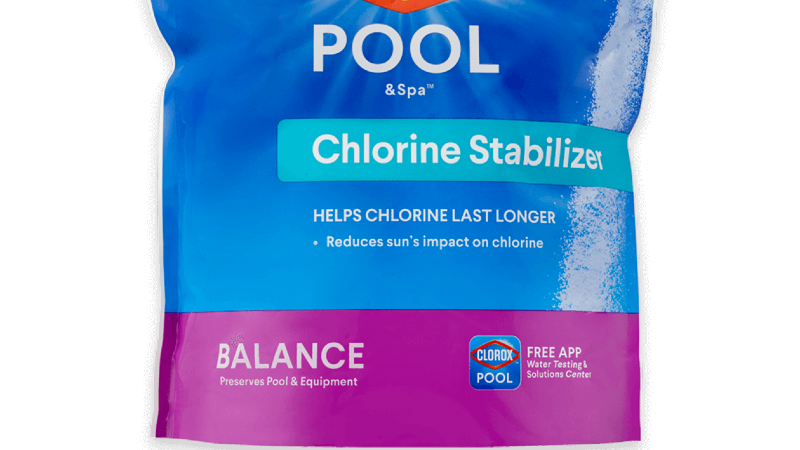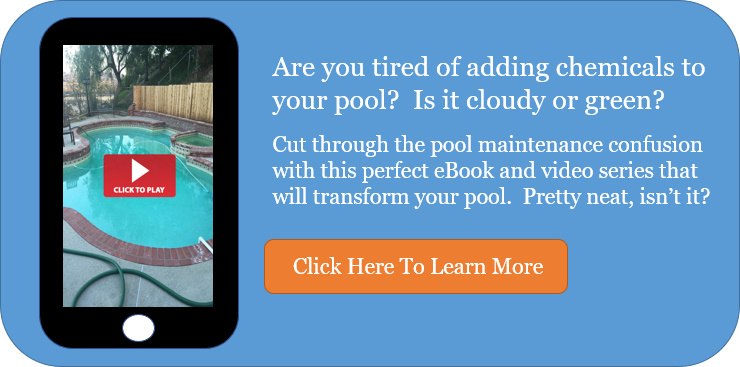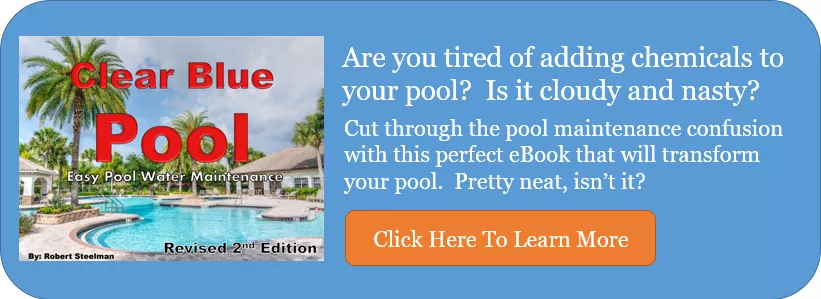Your Ultimate Guide To Pool Stabilizer
You have your pool set up and the chemistry is correct. Except for one thing: your pool stabilizer. Believe it or not, your pool stabilizer, also known as cyanuric acid, is absolutely the most important chemical reading. Yes, you read that right. Your CYA is the one you must keep any eye on. Everything else can be perfect, but if your CYA is out of whack, you can forget about having a crystal clear pool. And here's why.
Why Do We Test Our Pool Water?
Unbalanced pool chemistry can literally destroy your pool. Not overnight, or in a week. But consistently unbalanced water can wreak havoc on your swimming pool. Chlorine that is maintained too low will cause algae to grow and bacteria can overtake your pool. pH that's out of range can cause erosion problems.
Calcium hardness that's too high for too long can cause your chlorine generator to scale and calcify up and stop working. And total alkalinity levels that are unchecked can throw off the pH levels. The test kit that I use and recommend is the Taylor K-2006 kit.

What Is Pool Stabilizer?
Pool stabilizer goes by many different names such as pool conditioner, cyanuric acid, and CYA. You can buy this chemical additive as either liquid or granules. CYA can also be a chemical additive that is found in chlorine tablets or sticks (called trichlor) or pool shock (called granular dichlor or trichlor). When granular pool stabilizer and granular chlorine are mixed together, the resulting product is called stabilized chlorine.
What Does Pool Stabilizer Do?
Ah, now this is my favorite part. Most of the chlorine we buy, whether it's granular such as calcium hypochlorite, or liquid chlorine which is sodium hypochlorite, is considered unstabilized. This means these types of chlorine have no pool stabilizer, or CYA in them. It's the pool stabilizer's job to make sure the chlorine is effective at doing its job. What's its job? At killing algae spores and bacteria in your pool.
The chlorine needs a bit of help at being effective. Your T.V. remote needs batteries to be effective. Without working batteries, your remote can't do its job of the channel and volume going up and down. The CYA in your pool acts like batteries for your chlorine.
How Much Pool Stabilizer Do I Need?
There's really not a full agreement for the optimal level of stabilizer in your pool. You'll see opinions and pool store print-outs range from as low as 10 ppm to as high as 250 ppm, and sometimes higher.
From a pool chemistry point, the proper range for your pool stabilizer is between 30 - 50 ppm. CYA that's higher or lower will make your pool chlorine work harder at doing its job of killing organics in the pool. You might see more algae growth at lower or higher levels, and it can have a negative impact on your chlorine's effectiveness.
The one exception is a salt water pool. It can have a slightly higher pool stabilizer level of up to 70 ppm.
When Should I Use Chlorine Stabilizer?
When you have your CYA dialed in correctly, the stabilizer level typically won’t decrease unless you have significant splash out, evaporation and topping off of the water, or heavy rains that can dilute your CYA. A new fill on your pool is the perfect time for adding stabilized chlorine or straight up liquid or granular pool stabilizer. CYA is not like your chlorine and pH levels that need weekly attention. Get it right and, everything being equal, it'll stay there for a while.
It's best to switch to non-stabilized chlorine for your weekly maintenance. This chlorine can be found in both liquid and granular form. Make sure to test your pool chemistry twice per week.
How To Add Pool Stabilizer
Pool stabilizer can be found in either liquid or granular forms. Which one you get depends on your needs at the moment. Do you need to get your CYA in the pool right now? Then liquid stabilizer is the way to go. Can you want a few days and want to save a little money? Then granular is your choice.
Both liquid and granular forms of pool stabilizer can be added directly into the skimmer. But as always, follow the directions on the package.
If you choose to go the granular CYA route and want to add it into the skimmer, there are some things to remember. First, it's granular which means it will take a few days to fully dissolve. You will want to keep your pump motor on until the CYA has had a chance to fully dissolve. Second, do NOT backwash during this process. You'll lose some if not all of your pool stabilizer and that's wasted money and chemical. Last, you will want to add your pool stabilizer in stages. If you have a larger pool and need to add a large amount of cyanuric acid, add it by a 1/3 with about 8 - 10 hours between applications.
Example: Add a 1/3 stabilizer in the evening, the next 1/3 in the morning, and the last 1/3 that evening. This will give the granular pool stabilizer a chance to dissolve and you won't be overburdening your filter with granular stabilizer. Adding granular CYA into a bucket and hoping it will dissolve is really wishful thinking. Even with thousands of gallons of water washing over it in your filter, it can still take about 3 days to fully dissolve.
If you choose the liquid pool stabilizer route, I suggest getting a 5 gallon bucket and filling it 1/2 with pool water, then adding the correct amount of stabilizer for your size pool. Stir with a stir stick or PVC pipe, and then evenly broadcast it around the perimeter of the pool, starting in the deep end. Make sure you sweep after adding your chemical. Filter for 8 - 10 hours, retest, then make another adjustment if needed. Once your CYA reading is between 30 - 50 ppm, your work is finished.
When Should I Avoid Using Chlorine Stabilizer?
If you have an outdoor pool, you most certainly need chlorine stabilizer. There are no exceptions. Pool stabilizer will help your chlorine be as effective as it can for as long as it can. Yes, too much or too little stabilizer can cause your pool problems. Make sure you test your pool stabilizer at least once per month, after a heavy rain, or after a pool party with lots of splash out and topping off of the pool water.
How To Become A Pool Stabilizer Pro
Once you have a good test kit and learn how to use it, you're well on your way to becoming a pool stabilizer professional. A little tweaking here and there and your CYA level will be perfect.

